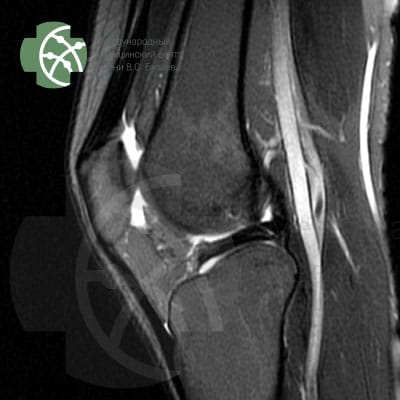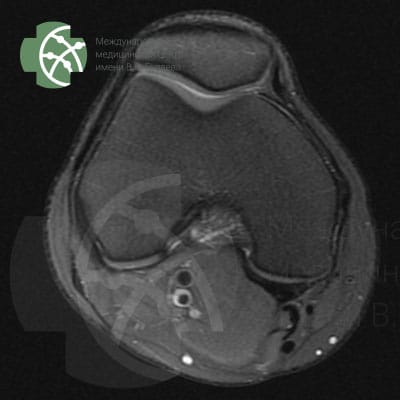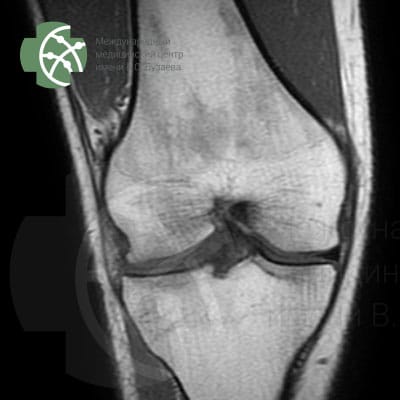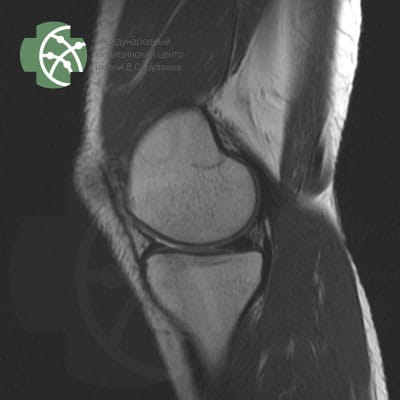MRI of the knee joint



Magnetic resonance imaging of the knee joint without contrast agent
Rating:
Reviews 2GIS Yandex Google
What you will receive
Medical report with recommendations
We will record the MRI data on DVD-disk. On the disk envelope, we will indicate QR-CODE, which allows you to download the study description 24 hours after the examination.
Who needs this service?
Indications for MRI of the knee joint (determined by the trauma doctor during an in-person consultation):
MRI examination is performed after consultation with an orthopedic doctor. The most common indications for MRI of the knee joint:
- traumatic injuries
- preparation for surgery
- signs of joint inflammation;
- suspicion of dystrophic changes
- congenital developmental anomalies
- the need to exclude tumors, metastases;
- questionable data obtained during ultrasound, CT, or X-ray.
Who cannot receive such a service? Contraindications for MRI of the knee joint (applicable to the MRI machine in our clinic):
Absolute contraindications for MRI of the knee joint:
- The presence of “embedded” metallic elements, implants, shrapnel, and electronic stimulators in the body that cannot be removed
- Early pregnancy in women
- Chronic diseases of the urinary system, kidney ailments accompanied by reduced excretory functionality. The restriction applies to the procedure in contrast mode
- The presence of allergic reactions in a patient to a specific contrast agent
Conditional contraindications:
- Weight over 170 kg
- shock, extremely severe condition of a person
- CNS disorders accompanied by uncontrolled movements
How we do it
MRI of the knee can be performed in a lying position, feet towards the aperture of the machine, which allows successful examination even for people with claustrophobia (fear of enclosed and tight spaces)
MRI does not require anesthesia or special preparation.
Before the procedure, the MRI-technician will check you with a special device to ensure there are no metals in your body or clothing that react to the magnetic field. Then, you will be placed on the MRI table and instructed. You will be given a button in your hand, which can instantly stop the examination if pressed. Then, the knee joint examination protocol, consisting of seven programs, will be initiated.
If necessary to clarify the obtained data, additional research programs may be connected after agreement with you.
What is included in the service?
The research protocol in different clinics can vary significantly. MRI is always a compromise between the time spent on the examination and its quality.
We use all recommended programs, ensuring the highest quality of research, allowing for a detailed examination of the knee area without missing pathological changes.
An important aspect is the research step – thickness “sections “, we obtain as a result of the study. The smaller the step and the more slices, the more detailed we can assess the condition of the tissues.
Our MRI knee joint protocol includes the following sequences:
Program / slice thickness
PD FS saggital 3 mm
T2 saggiati 3 mm
T2 FS saggital 3 mm
PD FS coronal 3 mm
T1 coronal 3 mm
PD FS axial 3 mm
MERGE saggital 3 mm
How long will it take?
The MRI protocol of the knee joint in our clinic, including 7 different research programs, will take about 40 minutes.
How else can this be done?
Assessing the condition of the knee and knee joint can be done based on symptoms during an examination by a trauma orthopedist. This specialist should see the patient, make a preliminary diagnosis, and after reviewing the examination results, provide a final diagnosis and prescribe appropriate treatment.
In addition to MRI, CT (computed tomography) and ultrasound can be performed.
But it should be understood that CT uses ionizing radiation, the dose of which needs to be strictly controlled; while ultrasound provides much less informative results.



You might need
- Consultation with a Trauma and Orthopedic Specialist
- Second Expert Opinion (description of MRI studies conducted in other clinics)